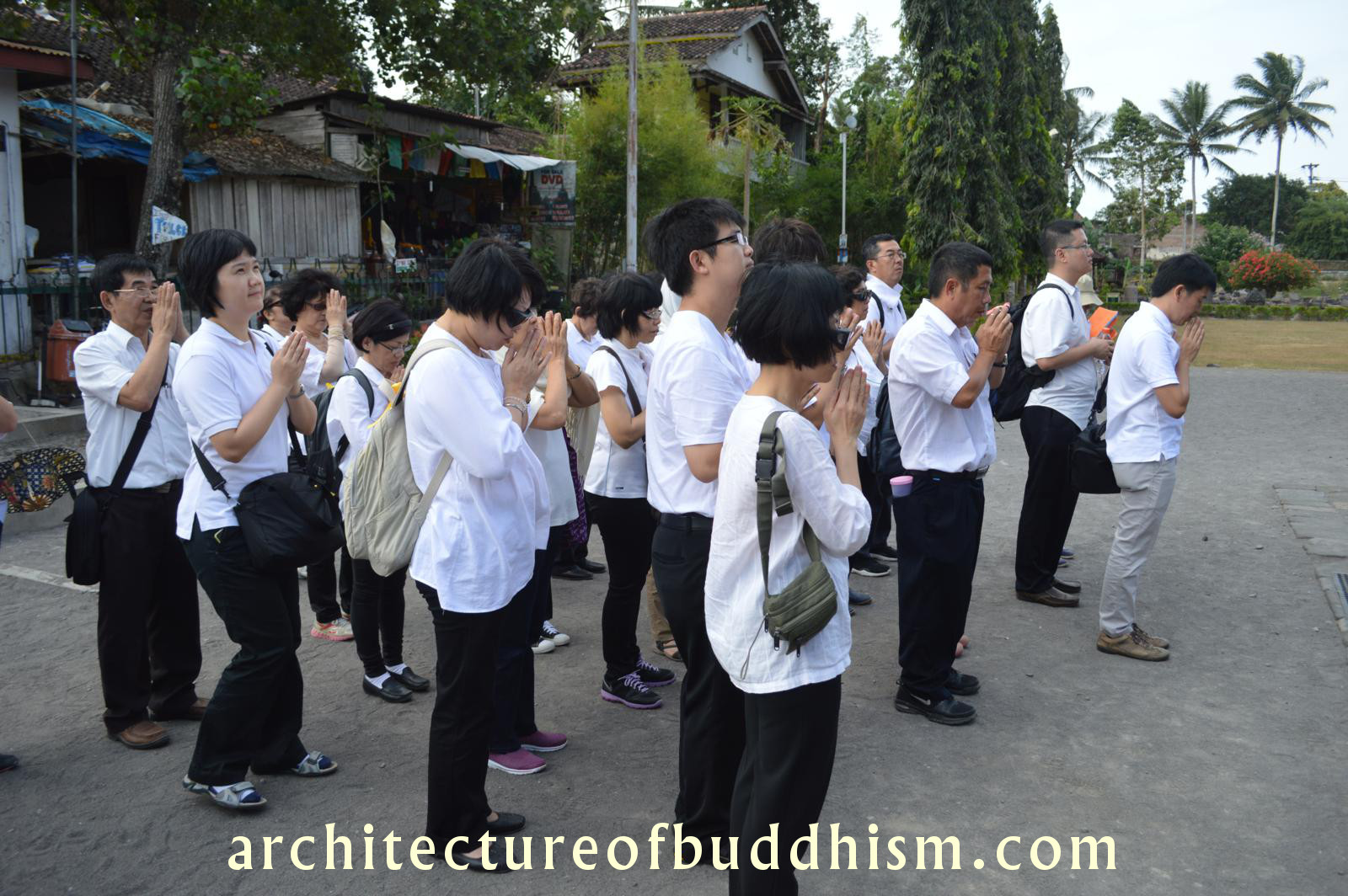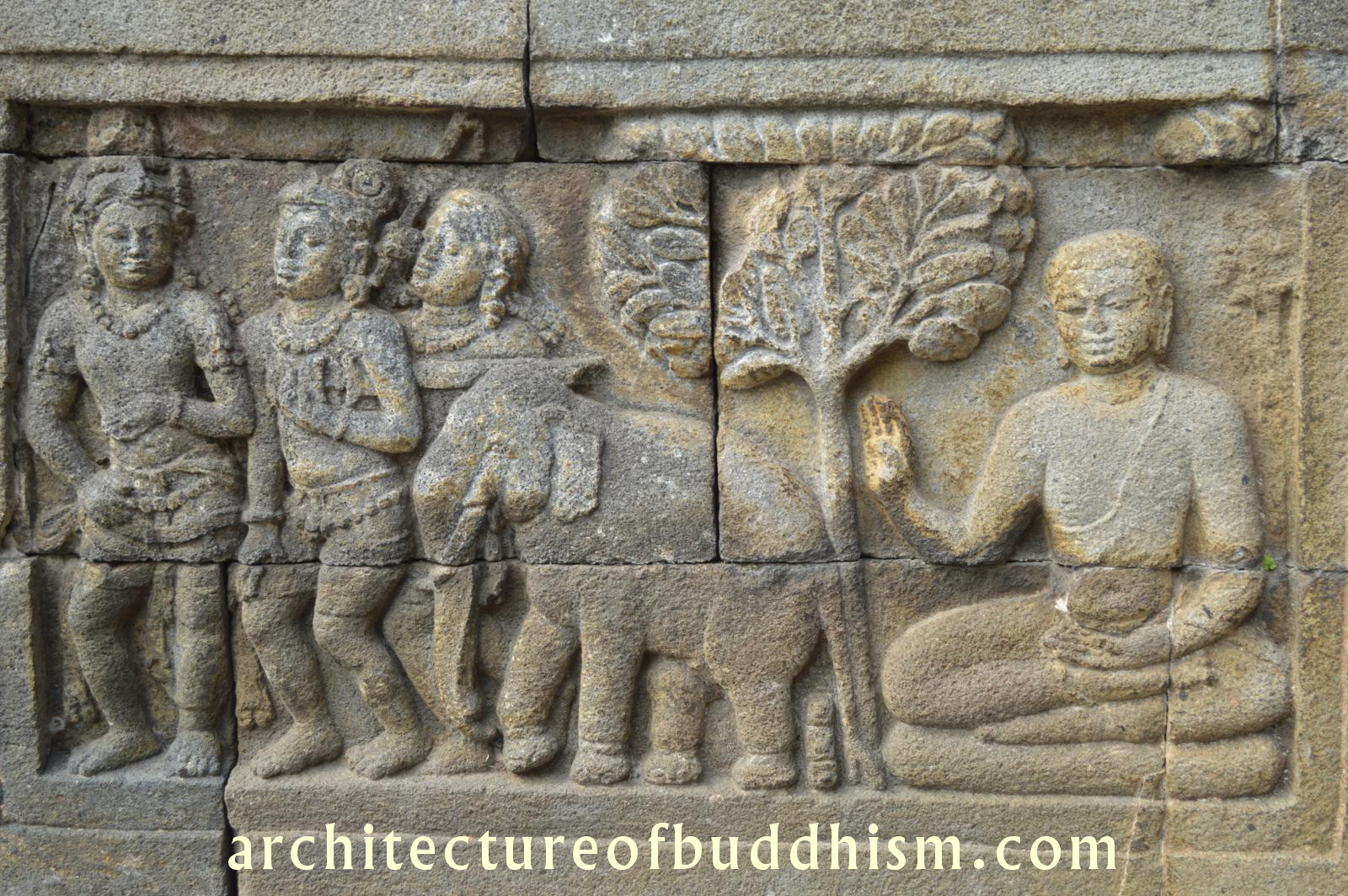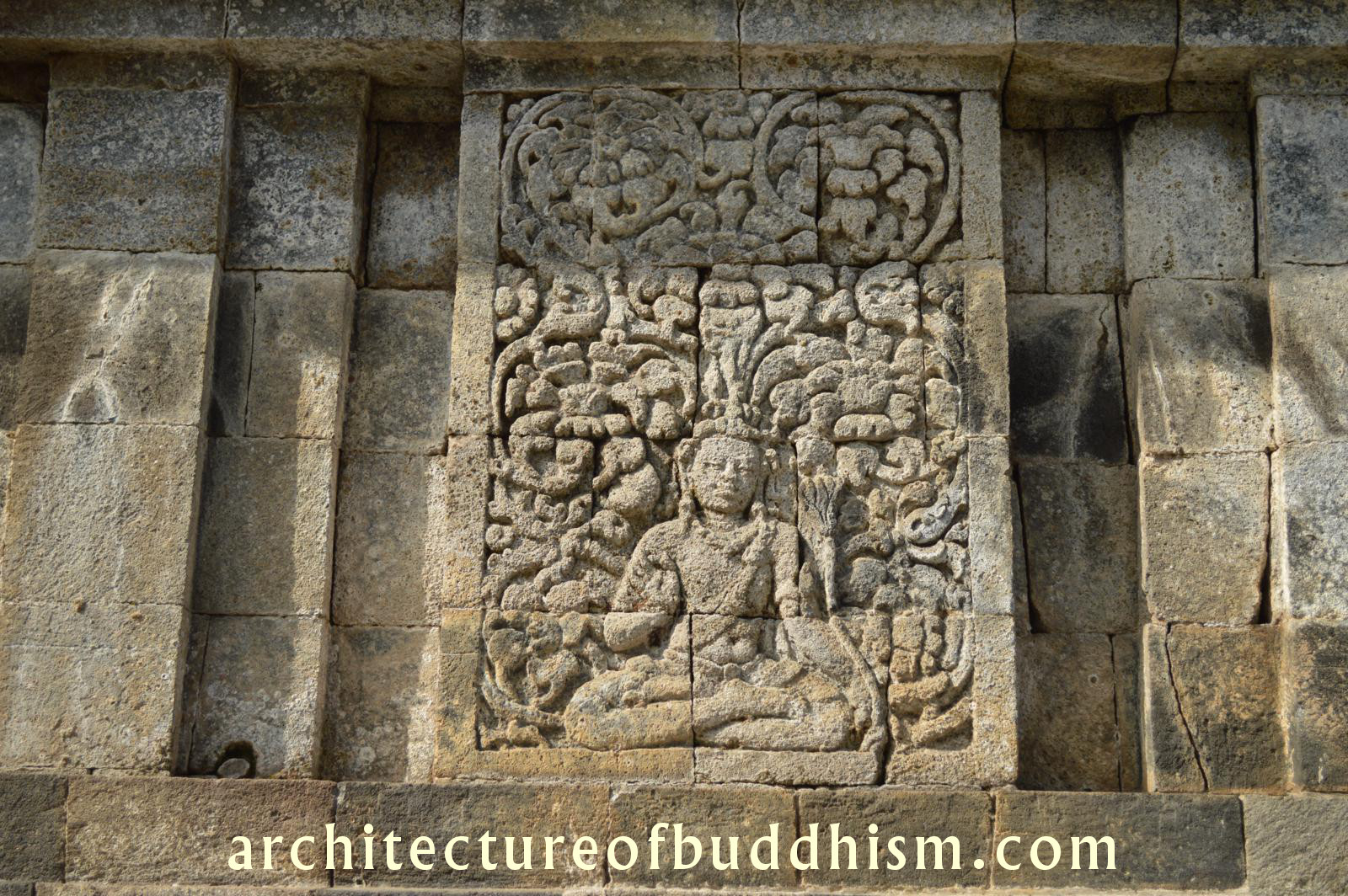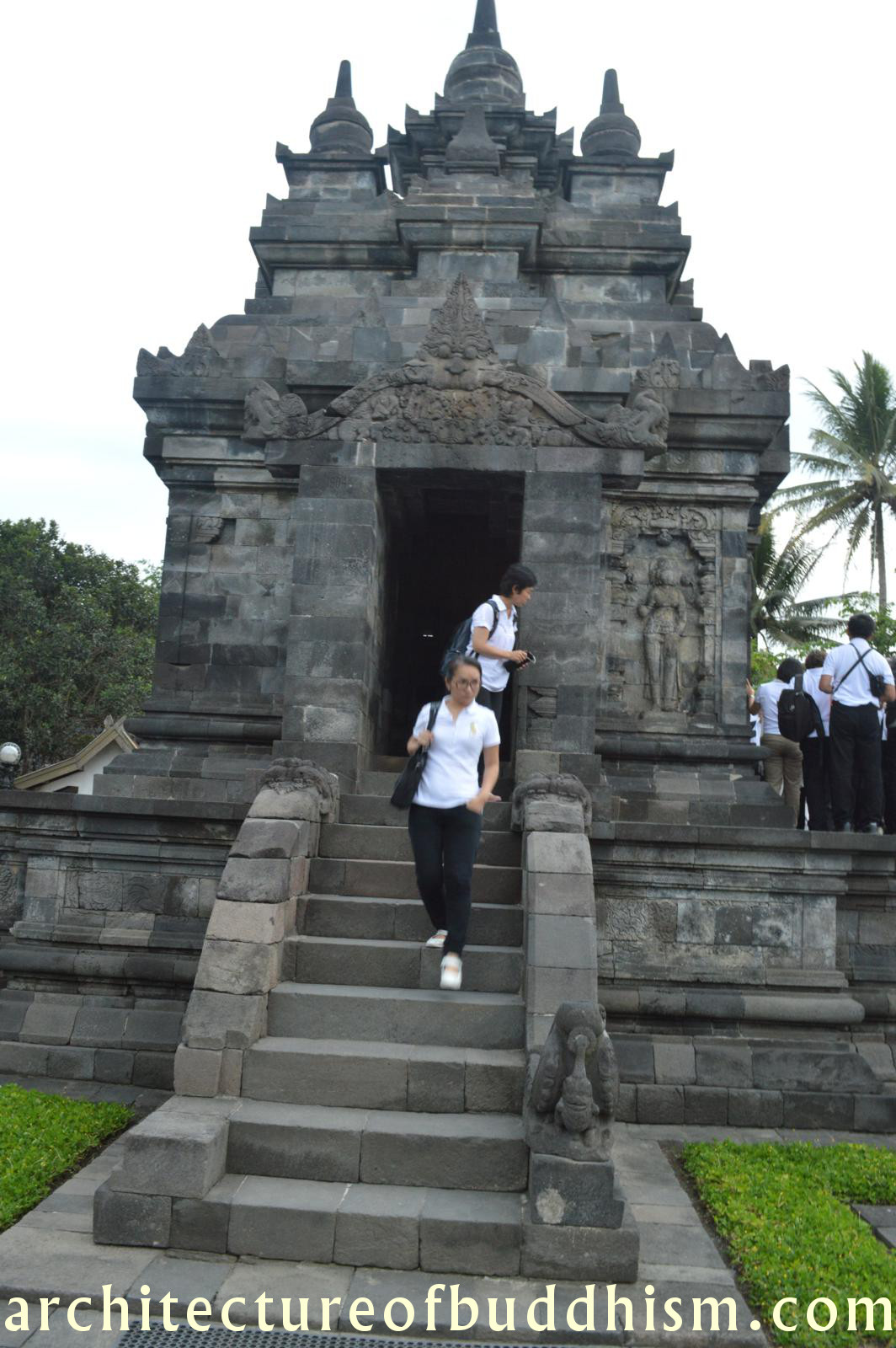This post covers Day 1 of 3 from the travel diary by Joan Foo Mahony, publisher of Architecture of the Buddhist World book series. Part 2 here.
TEMPLES OF THE BOROBODUR REGION, Jogjakarta, Indonesia
18th to 22nd September 2013
Through the kindness of Brother Dr. H.S Tan, the founder of the Nalanda Institute in Kuala Lumpur, I was one of his fortunate forty-five students who were invited on this trip to Borobodur to see one of the wonders of the Buddhist world.
These are my notes of a remarkable dharmic journey.
DAY ONE – CANDI MENDUT
Candi Mendut, located 3 km from the Borobodur temple complex was built in 760 CE, at the height of the Shailendra dynasty during the Sri Vijaya period, about 10 years before the huge temple complex of Borobodur itself was actually built. However, it is believed that when Candi Mendut was built, this was done specifically with Borobodur in mind. It was part of the builders’ grand design.
Candi Mendut faces west towards Borobodur and is located 3 km eastwards from it The smaller Candi Pawon lies in between in a straight line. Candi Pawon is about 1 km away from Borobodur. A pilgrim in those days who travelled to see the wonders of Borobodur would thus be travelling along this straight line in this area now called the Kedu Plains, arriving first at Candi Mendut; then to the next temple, Candi Pawon; and then finally reaching Borobodur.
As they journey, the pilgrims would cross the two rivers of Elo and Progo, the waters of the rivers symbolically purifying them.
‘Candi’ refers to ancient structures based on the Indian type of single-celled shrine, with a pyramidal tower above it, and a portico. The term Candi is given as a prefix to the many Hindu and Buddhist temples which are pre-Islamic in origin in Indonesia, built as a representation of the Cosmic Mount Meru.
Candi Mendut is a small but absolutely exquisite temple ; a stand-alone single structure set in a small peaceful garden by a great big tree.

As a single structure, Candi Mendut differs from the other temples of Borobodur and the Jogjakarta region as they are all a complex of temples. It is as a single structure that accounts for its beauty; its stunning simplicity and form built more than 1,000 years ago. It is perfectly balanced and symmetrical and although the top of the Candi is no longer visible, one can imagine how beautiful it once must have been. Even without the topmost part, Candi Mendut reflects a quiet dignity. To be able to be there up close and seeing this exquisite jewel of a temple is such a pleasure and a privilege.
Brother Tan, leading the participants in prayer and circumambulating the Candi Mendut, before stepping up to the Candi
The walls of the exterior have various stone panels or bas reliefs all finely carved with carvings that have borrowed Indian elements of nagas, demi gods, deities and Boddhisatvas. The amazing thing is that no two carved panels look the same.
In those days, they were first carved, then plastered over and then finally painted with all kinds of fabulous coloured pigments. I imagined how the temple must have looked then and I bowed my head in gratitude as I imagined the temple glistening in the afternoon sunlight against the bright blue sky.

And, if just seeing the exterior of the temple was not enough, words failed me when we entered the interior cella of the temple and saw inside, the amazing 10 foot tall Buddha. Against a leaf shaped halo behind him, the stone Buddha is seated on a simple throne with his feet resting on lotus petals. The Buddha wears no special garments or vestments and is sculptured in the northern Indian style. The hand mudra is the preaching mudra.

The Buddha is not the historical Shakyamuni Buddha but is actually the supreme Buddha, the Agung Buddha; the Adi Buddha or the Vairocana – the Buddha at the centre ; facing west and looking at the Buddha in the east, following the Buddhas of the four directions in Vajrayana Buddhist practice. This Buddha stuns in its simplicity; its serenity reflected in the pure smooth stone it is made of. This Buddha contained and resting unmolested inside the Candi Mendut for more than 1,000 years is also the reason why there are NO Buddhas higher than 10 foot tall in Indonesia. No other Buddha could be better than this. Indeed !
On both sides of the Vairocana Buddha sit 2 Boddhisattavas. To the left is the Vajrapani on a lotus shaped cushion seated with one leg up.To the Buddha’s right sits Avolektishivara with a crown or brahma at his head and on the top of this crown sits the Buddha Amitabha. Unlike the Avolektishvara in China where it is called the Kuan Yin Buddha (a female manisfestation of the Buddha ), this Avolektishvara is male. In fact, all 3 Buddhas here are depicted in their male forms.
At the side are many niches where bronze Buddhas must have been placed. Sadly, now, all have been stolen.
THE MENDUT VIHARA
Just across the street from Candi Mendut is a modern vihara or monastery built by the monk, Rev Panyawara to train young monks. The vihara emulates the Candi Mendut in its simple style and as we walked through its charming grounds, we were struck by its architecture which blends in so nicely with the surrounding and its quietly imposing neighbour, the Candi Mendut itself.

The architecture of the Vihara is East Javanese style (unlike that of the temples of Borobodur which is Central Javanese style). Here, at this modern vihara, the many stupas in the garden are slender and thin as is the custom in East Java and very different from the rest of the stupas we would see later throughout our trip as the stupas of Central Java (where we were ) are stocky, bulbous and chunky.



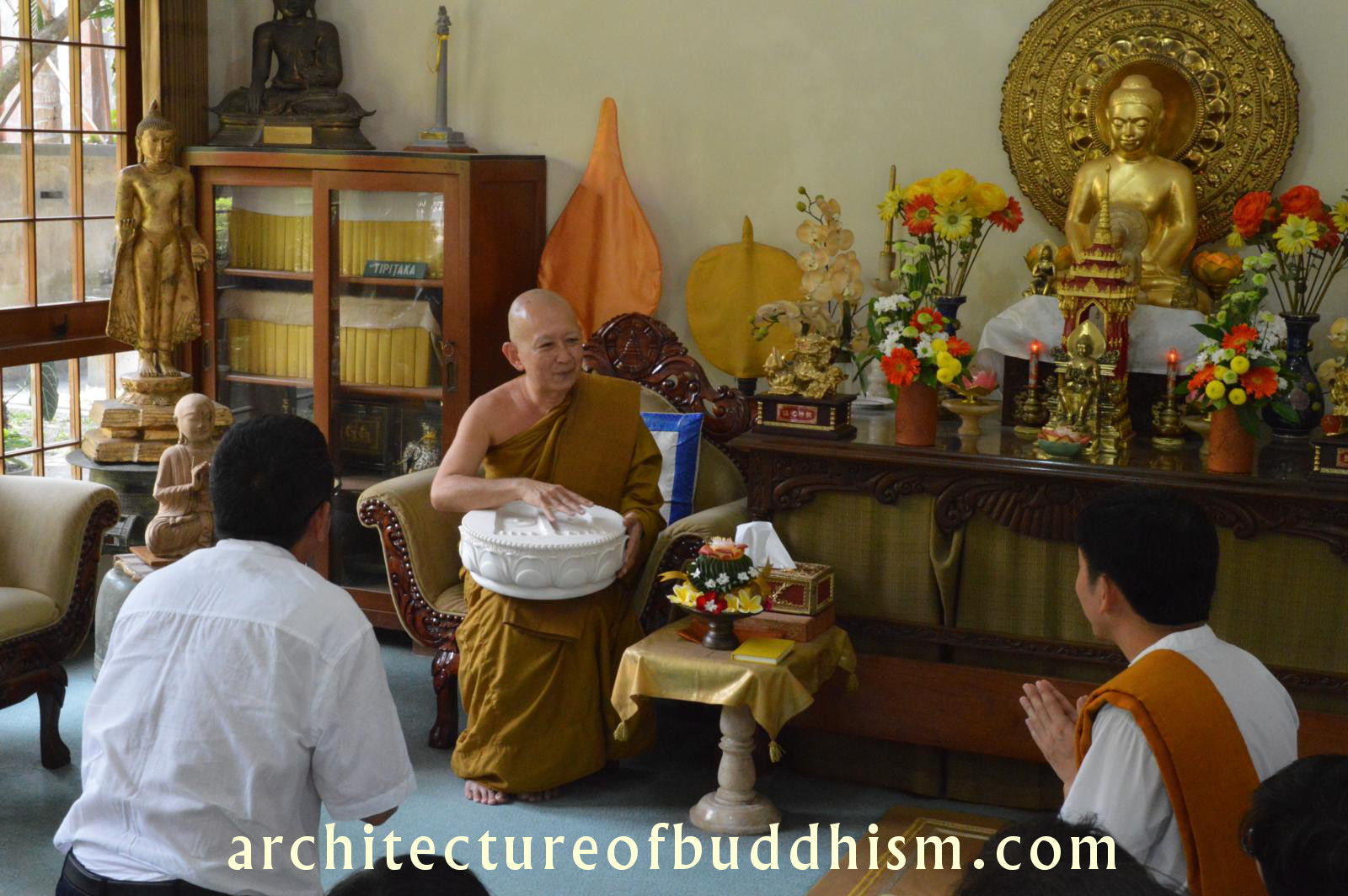
CANDI PAWON
Between Candi Mendut and Borobodur, in a straight line facing west and towards Borobodur in the east, Candi Pawon is only 1.25 km from Candi Mendut and 1.75 km from Borobodur. As mentioned above, the pilgrim travelling eastwards to Borobodur from the Kedu Plain would pass by Candi Mendut first and then Candi Pawon at the centre. Just as in the case of Candi Mendut, Candi Pawon was built before Borobodur. However, Candi Pawon was badly destroyed during the earthquakes and when it was finally restored in 1904, only half of its original structures remained.
The temple has some interesting bas reliefs with mythical forest creatures (the heavenly forest or hemawanta), the wish fulfilling tree, Indra the God and Inari the half bird, half human.


Text by Joan Foo Mahony.
Thanks Alex for the great photography to accompany the travel diary.
>> Pinterest gallery of further Central Java trip photos here
About the photographer
Alex is a Civil Engineer who builds bridges and water related structures. He is a very keen photographer and has used his love of photography not only to document the progress of his building projects but to record his travels through photo-essays. Of special interest to Alex are gardens, heritage buildings and Buddhist temples . Contact: zhangxinfu [at] hotmail.com

